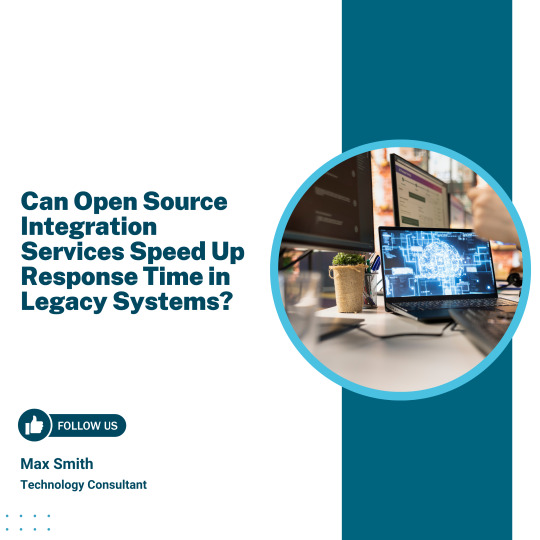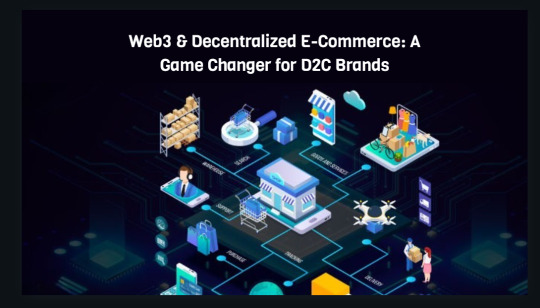#Digital Process Automation Banks
Explore tagged Tumblr posts
Text
ppl up in arms about “sentence mixing being way better than AI voice generators” be so for real. theyre different things. joe biden Pills. Now. Please. and ben shapiro Im Not Gonna Get Old on the Beach are both landmark videos and pretending the second one isnt because it was made by the “scary AI” is like. come on. be serious.
#like yeaaah i guess you could argue its unethical bc ben shapiro didnt consent to having his voice made into a bank like that#but the AI is literally just doing what the sentence mixing guys are doing. just automated#so if you wanna raise an ethical issue there i think you gotta raise it with the ytpoopers as well imo#and. its ben shapiro.#be so for real! theyre different things#you ever laugh at one of those spongebob sings world is mine videos from awhile back? its the same shit#utau doesnt have an AI component to it afaik but the process is all the same#of course this isnt applied when COMPANIES are doing it for PROFIT.#but thats always been the case#all this tells me is that you have no idea how voice synthesis has been progressing over the years and have no understanding of how the#software to produce these things work. tbh xoxo#oh no i made a bad post#btw what i mean when i say theyre different things and yet say the process is the same is that the results come out sounding different#process is largely* the same i mean#like ppl dont stop making pixel art bc you can make higer fidelity digital art#same principle
16 notes
·
View notes
Text
#Echecks#Electronic checks#Merchant services#Payment processing#Digital payments#ACH (Automated Clearing House)#Online payments#Payment gateways#Payment solutions#E-commerce payments#Payment processors#Secure transactions#Electronic funds transfer#Payment technology#Payment verification#Payment acceptance#Digital banking#Transaction fees#Fraud prevention#Payment authorization
2 notes
·
View notes
Text
Fast-Track Growth with Business Process Automation Services
Accelerate Success with Business Process Automation Services
In today's competitive digital landscape, manual processes are no longer sustainable. Business Process Automation Services are transforming how modern businesses operate—eliminating inefficiencies, reducing operational costs, and enabling real-time decision-making.

From automated approvals and task scheduling to intelligent document processing and customer support workflows, automation tools can handle repetitive tasks with unmatched precision. By leveraging technologies like AI, machine learning, and RPA (Robotic Process Automation), companies can streamline their core operations while freeing up human talent for strategic work.
What makes BPA even more powerful is its scalability. Whether you're a startup or an enterprise, automation solutions can be tailored to your needs—integrating with your CRM, ERP, or cloud platforms seamlessly. The result? Faster turnaround times, improved accuracy, and a better experience for both employees and customers.
If you're ready to ditch the chaos of manual processes and fast-track your organization’s growth, investing in Business Process Automation Services isn't just an option—it’s a necessity.
#Business Process Automation Services#enterprise automation#digital transformation in banking and finance#enterprise mobility solutions#digital healthcare solutions
0 notes
Text
Musing Mondays #5: The Cost of Convenience: How AI Voice Assistants Are Changing Customer Experience
Technology is evolving at a rapid pace, and with it comes a slew of innovations that promise to make our lives easier. One area where this is particularly visible is in the realm of customer service, where automated voice assistants are increasingly replacing human operators. While these systems are designed to streamline processes and improve efficiency, they can also introduce a host of new…
#accessibility#accessibility issues#AI#AI ethics#automation#banking#Capital One#customer service#digital accessibility#efficiency#inclusion#Musing Mondays#neurodivergent#speech processing#tech innovation#technology design#technology evolution#user experience#voice assistant
0 notes
Text
0 notes
Text
Big e-Aadhaar revamp on the cards! No more photocopies of Aadhaar card required, updation to become easy; check top steps

The Unique Identification Authority of India (UIDAI) is set to revamp e-Aadhaar, introducing a QR code-based system to eliminate need for physical copies. Updates, excluding biometrics, will be automated through integrated databases, reducing center visits.
Big e-Aadhaar revamp soon! In the coming weeks, a new QR code-based application will eliminate the need for Aadhaar card physical photocopies to be submitted. Users can share digital versions of their Aadhaar, choosing between complete or masked formats.By November, the Unique Identification Authority of India (UIDAI) is also planning to introduce a streamlined procedure that will significantly reduce visits to Aadhaar centres for updation.Except for biometric submissions, updates to address and other information will be automated through integration with various official databases. These include birth certificates, matriculation records, driving licences, passports, PAN cards, PDS and MNREGA systems.This initiative aims to simplify the process for citizens whilst reducing fraudulent document submissions for Aadhaar registration. Additionally, discussions are in progress to incorporate electricity bill records to enhance user convenience.Also Read | ITR filing FY 2024-25: Several changes in Form 16! Top things salaried taxpayers shouldn’t missUIDAI's chief executive officer Bhuvnesh Kumar has informed TOI about a newly developed application, with approximately 2,000 out of one lakh machines already utilising this new system."You will soon be able to do everything sitting at home other than providing fingerprints and IRIS," he said.e-Aadhaar Revamp: Explained in Top PointsThe application will enable users to update personal details including addresses, telephone numbers, names and incorrect birth date corrections.The introduction of QR code-based Aadhaar transfers between mobile devices or applications is considered essential for preventing misuse, with potential applications ranging from hotel check-ins to identity verification during rail travel. "It offers maximum user control over your own data and can be shared only with consent," Kumar said.The system can additionally be implemented by sub-registrars and registrars during property registration procedures to prevent fraudulent activities.Kumar indicated that UIDAI is working with state governments to incorporate Aadhaar verification for individuals registering properties, aiming to reduce instances of fraud.UIDAI has commenced discussions with CBSE and additional examination boards to facilitate biometric and other data updates for children, which needs to be completed during two age brackets: between five and seven years, and between 15 and 17 years. They are planning a dedicated campaign to address the pending updates, which include eight crore cases for the first update (children aged five to seven years) and 10 crore cases for the second update.Additionally, UIDAI is collaborating with various organisations, including security agencies and hospitality establishments, to extend Aadhaar services to entities where its use is not mandatory.Stay informed with the latest business news, updates on bank holidays and public holidays.
25 notes
·
View notes
Text
Virtual Character Tourney - Battle for 9th! (and 10th!)








Propaganda below (May contain spoilers!)
Kasane propaganda:
HER DREAM WAS TO ONE DAY BECOME A REAL VOCALOID AMD SHE FINALLY DID IT!!!!!! ITS NOT A VOCALOID VOICE BANK BUT ITS A FULL SYNTH V VOICEBANK!!!!! AND A NEW DESIGN!!!!! SHE DID IT SHE GOT HER DREAMS!!!!!! YOURE NEVER TOO OLD TO ACCOMPLISH YOUR DREAMS!!!!!!!
Kasane Teto is a vocal synth, she started out as an april fools joke to parody VOCALOID, with her voice bank in UTAU. although she did start out as just a joke a lot of vocaloid fans grew to really love her and she became rather popular. Kasane Teto is to UTAU as Hatsune Miku is to VOCALOID. But recently on Kasane Teto's 15th anniversary, April 1st 2023, she got moved from UTAU to SynthV. With her voice bank now in SynthV she also got a new character deign alone with how her voice and her singing sounds much more clear and human like than her UTAU voice bank which sounded a lot more mechanical/robotic.
ART propaganda:
ART (Asshole Research Transport, nicknamed by Murderbot), formally known as the space ship The Perihelion (in italics but this is a Google Form), also known as Peri (nicknamed by it's human family) is a super illegal highly advanced AI that was created by a university. It grew up with two human dads and a human sister. It and its crew go on research trips that are cover for allying with people and communities at the edges (and beyond) of the capitalist hellscape that is the Corporate Rim. It also goes on espionage missions by itself, without its human crew and family, posing as an automated cargo ship. It was during one of these missions that it picked up Murderbot, a super-duper illegal bot-human security unit construct that had hacked the torture device implanted in all bot-human constructs so that it could disobey orders and walk away from its "owners" without dying. Murderbot uses its illegal freedom to watch television, a habit it passes on to ART. Turns out ART doesn't like shows where human crew members get hurt.
ART is the AI that controls/is the research and teaching vessel Perihelion. (Perihelion is usually what people call it, but the protagonist of the series calls it ART so that's the name I put. ART stands for Asshole Research Transport.) It is extremely intelligent and advanced and also extremely sarcastic and condescending. 100% earned the name ART. ART will do absolutely anything for its crew!! It was developed and "raised" alongside the captain's daughter, Iris, and they're like siblings. Its crew calls it Peri. They do corporate espionage on the side to help bring down said corporations. It has a "debris deflection system" which is definitely not a weapon because ART isn't legally allowed to have a weapon. Definitely just for debris, don't worry about it. It's friends with the aforementioned protagonist, Murderbot, and ART is very good at bullying it into actually leaving its comfort zone when it needs to. They care about each other a lot, and they like to binge watch TV shows together. I don't want to write too much but I just love it a lot.
Ene propaganda:
She's blue. Headphone actor and yuukei yesterday are also bangers
Epic gamer cybergirl. Miku adjacent
She's a girl that was forced to become digital but is still a good friend. She may not have a body anymore but she's still important to the plot.
Murder-Bot 2.0 propaganda:
Sapient computer virus made from bits of two other AI characters (the original Murderbot and a spaceship AI). Unlike its not-parents, it is genuinely just code and doesn't have a physical body. Its only physical presence is through its effects on the machinery it infects, and it considers its "body" to be the code rather than any combination of physical objects. Also it was literally made to cause problems on purpose, does so enthusiastically, gives several people including its creators existential crises, and saves one of its creators (and other people from the (literal) fallout of the other creator learning the first one got killed)
Murderbot 2.0 is sentient killware created by Murderbot and ART with the purpose of being sent on a suicide mission. It has some of Murderbot's memories, but not all because it doesn't have any hardware of it's own to store that much information in. It travels by hopping in between other computer systems (mostly bots and bot-human constructs). It named itself Murderbot 2.0. It freed a security construct named Three. It's nicer and more open than both its parents.
EDI propaganda:
EDI is the AI of the Normandy starting with Mass Effect 2. Through dialogue EDI can become more human-like in her way of thinking, developing different kinds of relationships with the crew. In Mass Effect 3 she uploads herself into a body so she can freely move around and can be taken to missions, but she is still part of the ship's system.
Holly propaganda:
Due to a pay dispute with Holly's original actor, Norman Lovett, Holly was instead played by Hattie Hayridge during seasons 3-5. This was explained briefly in the show as them having gone through a "computer sex change". This makes Holly canonically trans do not @ me.
holly is the silliest most specialest ai ever. she has an iq of 6,000 but sometimes it seems like his iq is more like 6. they're possibly transgender (do computers have gender??) (i am panicking over pronouns while writing this propaganda) - holly goes from appearing like a man to appearing like a woman with no real explanation(??) and nobody questions this (the show is from the 90s btw). he's hilarious and sometimes lies to the crew for no reason other than 'its a laugh, innit'. shes everything to me <3
Holly is the computer of Red Dwarf, a Tenth Generation AI hologrammatic computer who appears as a floating head on a screen. Can be downloaded onto various other devices. also literally transgender.. meets a female appearing parallel version of itself in a parallel universe and then goes through a sex change after falling in love with her. transgender computer ftw
Tama propaganda:
Tama is the eyeball of Kuruto Ryuki and investigates dream worlds with him. She's his bi emotional support eye who regularly ties him up to help him with stress relief and loves to affectionately tease him. She laughs at bad jokes and has AE10D1F ("Ryuki" in hexadecimal) in her likes on her profile.
OKAY anyway uhm she's like aiba in that she's a little Ai eyeball that helps you investigate except sadly no animal theme. instead she has a domintrix vibe instead!!!! she is so cool… also ermm she's a lot more. Human than aiba. Not literally/physically like uhh emotionally. I haven't finished aini but like she does look out for your best interest! what a good Ai partner i don't kno
She's voiced by Anairis Quiñones and she's an absolute legend
Lyla propaganda:
she is a humanoid ai programmed to help spider-man gather info. she can simulate human emotions and has a high intellect
#virtual character tourney#bonus round#kasane teto#utau#utauloid#murderbot diaries art#perihelion#the murderbot diaries#ene#kagerou project#murderbot 2.0#edi mass effect#mass effect#holly red dwarf#red dwarf#one more WOLVERINES for the road#tama#ai the somnium files#atsv lyla#lyla spiderverse#across the spiderverse#spiderverse#character polls
87 notes
·
View notes
Text
📢 Attention all digital marketers and SEO enthusiasts! 🚀
Have you heard about the revolutionary Money Robot Group Buy? 💰💪 If not, you're in for a treat! Let's dive into the details in this thread. 👇
Money Robot is a powerful SEO tool that can skyrocket your website's ranking on search engines. 📈💻 It automates the process of building backlinks, creating web 2.0 blogs, and submitting articles to directories. 😲✨
But here's the best part - with the Money Robot Group Buy, you can get access to this incredible tool at a fraction of the cost! 💸🔥
By pooling resources with other marketers, you can enjoy all the benefits of Money Robot without breaking the bank. 🤑💼 Imagine having the power to dominate the search engine rankings without draining your budget!
Not only will you save money, but you'll also gain access to a community of like-minded individuals. 🤝💡 Share tips, tricks, and strategies, and learn from others who are using Money Robot to achieve amazing results.
But you might be wondering, is the Money Robot Group Buy legit? 🤔 Absolutely! With our trusted providers, you can rest assured that you'll receive a genuine and fully functional account. No scams or fake accounts here!
Ready to take your SEO game to the next level? Join the Money Robot Group Buy today and unlock the potential of this game-changing tool. 💥🔓
Don't miss out on this opportunity to supercharge your website's visibility and drive organic traffic like never before. Act now and witness the incredible results for yourself! ⚡🚀
DM us for more information and secure your spot in the Money Robot Group Buy. Limited slots available, so don't wait too long! ⏳💯
#MoneyRobotGroupBuy #SEO #DigitalMarketing #RankingBoost #GameChanger
50 notes
·
View notes
Text
#Echecks#Electronic checks#Merchant services#Payment processing#Digital payments#ACH (Automated Clearing House)#Online payments#Payment gateways#Payment solutions#E-commerce payments#Payment processors#Secure transactions#Electronic funds transfer#Payment technology#Payment verification#Payment acceptance#Digital banking#Transaction fees#Fraud prevention#Payment authorization
2 notes
·
View notes
Text
Can Open Source Integration Services Speed Up Response Time in Legacy Systems?
Legacy systems are still a key part of essential business operations in industries like banking, logistics, telecom, and manufacturing. However, as these systems get older, they become less efficient—slowing down processes, creating isolated data, and driving up maintenance costs. To stay competitive, many companies are looking for ways to modernize without fully replacing their existing systems. One effective solution is open-source integration, which is already delivering clear business results.

Why Faster Response Time Matters
System response time has a direct impact on business performance. According to a 2024 IDC report, improving system response by just 1.5 seconds led to a 22% increase in user productivity and a 16% rise in transaction completion rates. This means increased revenue, customer satisfaction as well as scalability in industries where time is of great essence.
Open-source integration is prominent in this case. It can minimize latency, enhance data flow and make process automation easier by allowing easier communication between legacy systems and more modern applications. This makes the systems more responsive and quick.
Key Business Benefits of Open-Source Integration
Lower Operational Costs
Open-source tools like Apache Camel and Mule eliminate the need for costly software licenses. A 2024 study by Red Hat showed that companies using open-source integration reduced their IT operating costs by up to 30% within the first year.
Real-Time Data Processing
Traditional legacy systems often depend on delayed, batch-processing methods. With open-source platforms using event-driven tools such as Kafka and RabbitMQ, businesses can achieve real-time messaging and decision-making—improving responsiveness in areas like order fulfillment and inventory updates.
Faster Deployment Cycles: Open-source integration supports modular, container-based deployment. The 2025 GitHub Developer Report found that organizations using containerized open-source integrations shortened deployment times by 43% on average. This accelerates updates and allows faster rollout of new services.
Scalable Integration Without Major Overhauls
Open-source frameworks allow businesses to scale specific parts of their integration stack without modifying the core legacy systems. This flexibility enables growth and upgrades without downtime or the cost of a full system rebuild.
Industry Use Cases with High Impact
Banking
Integrating open-source solutions enhances transaction processing speed and improves fraud detection by linking legacy banking systems with modern analytics tools.
Telecom
Customer service becomes more responsive by synchronizing data across CRM, billing, and support systems in real time.
Manufacturing
Real-time integration with ERP platforms improves production tracking and inventory visibility across multiple facilities.
Why Organizations Outsource Open-Source Integration
Most internal IT teams lack skills and do not have sufficient resources to manage open-source integration in a secure and efficient manner. Businesses can also guarantee trouble-free setup and support as well as improved system performance by outsourcing to established providers. Top open-source integration service providers like Suma Soft, Red Hat Integration, Talend, TIBCO (Flogo Project), and Hitachi Vantara offer customized solutions. These help improve system speed, simplify daily operations, and support digital upgrades—without the high cost of replacing existing systems.
2 notes
·
View notes
Text
Thailand SMART Visa
Thailand’s Smart Visa program represents a strategic initiative by the Thai government to attract top-tier foreign talent, investors, and entrepreneurs��in targeted high-value industries. Unlike conventional work visas, the Smart Visa offers longer validity, reduced bureaucratic hurdles, and exclusive privileges tailored for professionals in technology, innovation, and advanced industries.
This comprehensive guide provides an in-depth, expert-level analysis of the Smart Visa, covering:
Visa categories and eligibility criteria
Application process and required documentation
Key benefits and limitations
Strategic advantages for businesses and individuals
Long-term residency pathways
1. Understanding the Smart Visa: Purpose and Target Sectors
Launched in 2018 by the Thailand Board of Investment (BOI) in collaboration with the Digital Economy Promotion Agency (DEPA), the Smart Visa is designed to: ✔ Accelerate Thailand’s transition into a digital and innovation-driven economy ✔ Attract foreign expertise in AI, robotics, biotech, fintech, and advanced manufacturing ✔ Encourage high-value investment in priority industries
Targeted Industries
The Smart Visa is available for professionals and businesses in the following sectors:
Next-generation automotive (EVs, smart mobility)
Smart electronics and IoT
Advanced agriculture and biotechnology
Automation and robotics
Digital and direct-to-consumer (DTC) startups
Financial technology (Blockchain, digital banking)
Aerospace and aviation tech
2. Smart Visa Categories: Which One Fits Your Profile?
The Smart Visa is divided into four distinct categories, each with specific eligibility criteria:
A. Smart-T (Talent Visa) – For High-Skilled Professionals
✔ Who qualifies?
Experts in AI, machine learning, cybersecurity, biotech, or advanced engineering
Minimum salary of 200,000 THB/month (lower thresholds possible for BOI-backed companies)
Must be employed by a Thai company in a BOI-promoted sector
✔ Key benefits:
No work permit required
Permission to work for multiple companies (with approval)
B. Smart-I (Investor Visa) – For High-Net-Worth Investors
✔ Who qualifies?
Minimum investment of 20 million THB in a Thai tech company or startup
Investment must align with BOI’s priority sectors
✔ Key benefits:
No minimum stay requirement
Family members eligible for dependent visas
C. Smart-E (Executive Visa) – For Senior Corporate Leaders
✔ Who qualifies?
C-level executives or directors in BOI-promoted companies
Minimum salary of 200,000 THB/month
✔ Key benefits:
Fast-tracked immigration processing
Exemption from re-entry permits
D. Smart-S (Startup Visa) – For Tech Entrepreneurs
✔ Who qualifies?
Founders of registered startups in Thailand
Must be endorsed by DEPA or a BOI-approved incubator
Minimum 50,000 USD funding or participation in a recognized accelerator
✔ Key benefits:
Access to Thai startup ecosystem and funding networks
Easier business registration processes
3. Step-by-Step Application Process
Step 1: Determine Eligibility & Gather Documents
For Employees (Smart-T, Smart-E):
Employment contract
Company’s BOI certification (if applicable)
Proof of salary (tax documents, bank statements)
For Investors (Smart-I):
Proof of investment (bank transfer, share certificates)
BOI investment approval letter
For Startups (Smart-S):
Business registration documents
Proof of funding (venture capital, accelerator acceptance)
Step 2: Submit Application to the Smart Visa Unit
Applications can be filed online or at the One Start One Stop Investment Center (OSOS) in Bangkok.
Processing time: 3-4 weeks.
Step 3: Visa Issuance & Entry into Thailand
Initial visa validity: Up to 4 years (renewable).
No 90-day reporting required (unlike standard visas).
4. Key Benefits: Why Choose the Smart Visa?
FeatureSmart VisaStandard Work VisaVisa ValidityUp to 4 years1 year (renewable)Work PermitNot requiredRequired90-Day ReportingExemptMandatoryDependent VisasSpouse & children eligibleSpouse eligible (with restrictions)Income Tax BenefitsPossible exemptionsStandard taxation
Additional Perks:
✔ Multiple re-entry permits without additional paperwork ✔ Spouse can work legally (subject to approval) ✔ Fast-tracked permanent residency pathway
5. Challenges & Considerations
A. Strict Eligibility Requirements
High salary thresholds (200,000 THB/month for Smart-T/E)
BOI/DEPA endorsement mandatory (limits flexibility for non-tech professionals)
B. Limited Scope Outside Tech & Investment
Traditional industries (e.g., hospitality, education) excluded
No provisions for freelancers or digital nomads
C. Bureaucratic Hurdles for Startups
Startup Visa requires accelerator backing, which can be competitive
6. Long-Term Strategic Advantages
A. Gateway to Permanent Residency & Citizenship
After 3+ years, Smart Visa holders can apply for permanent residency.
Elite Visa upgrade possible for long-term stays beyond 4 years.
B. Access to Thailand’s Booming Tech Ecosystem
Eastern Economic Corridor (EEC) offers tax breaks for tech firms.
Growing VC funding in AI, fintech, and biotech.
C. Regional Business Expansion
Thailand’s strategic ASEAN location makes it ideal for scaling businesses across Southeast Asia.
7. Expert Tips for a Successful Application
✔ Consult with a BOI-certified lawyer to ensure compliance. ✔ Maintain clear financial records (especially for investment visas). ✔ Prepare for potential immigration interviews (some offices require in-person verification).
Conclusion
The Thailand Smart Visa is one of the most attractive long-term visa options for high-skilled professionals, investors, and startup founders. With 4-year validity, work permit exemptions, and a streamlined process, it offers unparalleled advantages over traditional visas.
However, its strict eligibility criteria mean it is best suited for those in tech, advanced industries, or with significant investment capital. For qualifying individuals, it provides a direct pathway to Thailand’s innovation economy and long-term residency.
Final Recommendation:
If you work in AI, robotics, biotech, or digital startups, the Smart Visa is ideal.
For investors, the 20M THB threshold is steep but offers long-term stability.
Startups should secure accelerator backing early to qualify for the Smart-S visa.
#thailand#immigration#visa#thaivisa#thailandvisa#visainthailand#thailandsmartvisa#smartvisa#thaismartvisa
2 notes
·
View notes
Text
What Are the Benefits of AI-Based Personal Loan Underwriting?
Introduction
Artificial Intelligence (AI) is transforming the financial industry, particularly in the area of personal loan underwriting. Traditional loan approval processes often involve lengthy paperwork, manual verification, and human-driven risk assessment. However, AI-based underwriting has revolutionized personal loan processing by making it faster, more efficient, and more accurate.
By leveraging AI, lenders can assess borrowers in real time, minimize risks, and improve loan accessibility. In this article, we explore the key benefits of AI-based personal loan underwriting and how it is shaping the future of digital lending.
What Is AI-Based Personal Loan Underwriting?
AI-based personal loan underwriting uses machine learning algorithms, big data analytics, and automation to evaluate a borrower’s creditworthiness. Unlike traditional methods that rely solely on credit scores and income statements, AI underwriting considers multiple data points, offering a more comprehensive risk assessment.
How AI Enhances Loan Underwriting:
Real-Time Credit Scoring – AI analyzes financial behaviors beyond credit history.
Automated Document Verification – Reduces manual work and processing time.
Risk Prediction Models – Identifies potential defaults before they occur.
Bias-Free Decision-Making – Minimizes human biases in loan approvals.
Faster Loan Disbursement – AI accelerates the approval process, ensuring quicker fund access.
Key Benefits of AI-Based Personal Loan Underwriting
1. Faster Loan Approvals and Disbursement
Traditional personal loan applications can take days or weeks to process. AI speeds up underwriting by instantly analyzing borrower data, leading to:
Instant pre-approval decisions
Faster document verification
Reduced loan processing time from days to minutes
2. More Accurate Credit Assessment
AI considers alternative credit data, such as:
Spending habits
Employment history
Utility bill payments
Social media activity (in some cases)
This results in a more accurate evaluation of a borrower’s financial stability, enabling better lending decisions.
3. Lower Default Rates
AI-powered risk prediction models analyze borrower behavior patterns to detect potential loan defaults before they happen. This allows lenders to:
Adjust interest rates based on risk levels
Offer tailored repayment plans to reduce defaults
Proactively manage risky loans through early intervention
4. Improved Accessibility to Loans
Many borrowers with thin or no credit history struggle to get approved for a personal loan. AI underwriting expands loan accessibility by:
Assessing alternative credit data for first-time borrowers
Enabling financial inclusion for gig workers and self-employed individuals
Providing microloans and flexible lending options
5. Enhanced Fraud Detection and Security
AI-driven underwriting systems detect fraudulent applications by analyzing:
Identity inconsistencies in submitted documents
Behavioral fraud patterns
Transaction anomalies in real-time
This significantly reduces fraud risks, protecting both lenders and borrowers.
6. Bias-Free and Fair Lending Decisions
Traditional loan underwriting often involves human biases that may unfairly disadvantage certain applicants. AI eliminates this by:
Using data-driven decision-making
Ensuring fair evaluation of all borrowers
Providing equal opportunities for loan approval
7. Cost-Effective Loan Processing
By automating underwriting tasks, AI reduces the need for manual labor and operational costs. This allows lenders to:
Offer lower interest rates to borrowers
Reduce loan origination fees
Increase profit margins while maintaining affordability
8. Better Loan Customization and Personalization
AI enables lenders to provide personalized loan offers based on individual financial profiles. This includes:
Flexible loan repayment schedules
Customized interest rates based on financial behavior
Pre-approved loan options tailored to borrower needs
How AI-Based Underwriting Works in Personal Loan Processing
Data Collection – AI gathers borrower data from multiple sources, including banking records and alternative credit sources.
Credit Analysis – Machine learning models assess the borrower’s creditworthiness in real time.
Fraud Detection – AI checks for identity mismatches and suspicious activities.
Loan Decisioning – AI instantly approves, rejects, or suggests loan modifications.
Fund Disbursement – Once approved, funds are transferred to the borrower’s account almost immediately.
The Future of AI in Personal Loan Underwriting
As AI technology continues to evolve, the future of personal loan underwriting will witness more advancements, including:
AI-powered voice assistants for loan applications
Blockchain integration for enhanced security
Predictive analytics for proactive financial planning
AI-driven customer support for better borrower experience
Conclusion
AI-based personal loan underwriting is revolutionizing the lending industry by making loans more accessible, faster, and secure. With its ability to minimize fraud, reduce bias, and improve risk assessment, AI is creating a fairer and more efficient loan approval process.
As financial institutions continue to integrate AI into their underwriting systems, borrowers can expect a seamless, data-driven personal loan experience with lower costs and improved accessibility. Whether you’re a first-time borrower or someone with a complex financial history, AI is making it easier than ever to get the right loan at the right time.
#personal loan#loan apps#fincrif#bank#nbfc personal loan#finance#personal loan online#personal loans#loan services#personal laon#Personal loan#AI-based underwriting#AI in personal loans#Digital loan approval#Machine learning in lending#Automated personal loan processing#AI-powered credit assessment#Instant loan approval#AI-driven loan underwriting#Smart loan decisioning#AI in financial services#Personal loan risk assessment#Alternative credit scoring#AI-powered fraud detection#Fintech personal loan solutions#Bias-free loan approval#Personalized loan offers#AI-driven loan disbursement#Loan application automation#AI-powered credit risk analysis
0 notes
Text
#loan origination system#banking#process automation#low code platform#digital transformation#document management system
0 notes
Text
What is the Difference Between a Smart Contract and Blockchain?
In today's digital-first world, terms like blockchain and smart contract are often thrown around, especially in the context of cryptocurrency, decentralized finance (DeFi), and Web3. While these two concepts are closely related, they are not the same. If you’re confused about the difference between a smart contract and blockchain, you’re not alone. In this article, we’ll break down both terms, explain how they relate, and highlight their unique roles in the world of digital technology.
1. Understanding the Basics: Blockchain vs Smart Contract
Before diving into the differences, let’s clarify what each term means.
A blockchain is a decentralized digital ledger that stores data across a network of computers.
A smart contract is a self-executing program that runs on a blockchain and automatically enforces the terms of an agreement.
To put it simply, blockchain is the infrastructure, while smart contracts are applications that run on top of it.
2. What is a Blockchain?
A blockchain is a chain of blocks where each block contains data, a timestamp, and a cryptographic hash of the previous block. This structure makes the blockchain secure, transparent, and immutable.
The key features of blockchain include:
Decentralization – No single authority controls the network.
Transparency – Anyone can verify the data.
Security – Tampering with data is extremely difficult due to cryptographic encryption.
Consensus Mechanisms – Like Proof of Work (PoW) or Proof of Stake (PoS), which ensure agreement on the state of the network.
Blockchains are foundational technologies behind cryptocurrencies like Bitcoin, Ethereum, and many others.
3. What is a Smart Contract?
A smart contract is a piece of code stored on a blockchain that automatically executes when certain predetermined conditions are met. Think of it as a digital vending machine: once you input the right conditions (like inserting a coin), you get the output (like a soda).
Smart contracts are:
Self-executing – They run automatically when conditions are met.
Immutable – Once deployed, they cannot be changed.
Transparent – Code is visible on the blockchain.
Trustless – They remove the need for intermediaries or third parties.
Smart contracts are most commonly used on platforms like Ethereum, Solana, and Cardano.

4. How Smart Contracts Operate on a Blockchain
Smart contracts are deployed on a blockchain, usually via a transaction. Once uploaded, they become part of the blockchain and can't be changed. Users interact with these contracts by sending transactions that trigger specific functions within the code.
For example, in a decentralized exchange (DEX), a smart contract might govern the process of swapping one cryptocurrency for another. The logic of that exchange—calculations, fees, security checks—is all written in the contract's code.
5. Real-World Applications of Blockchain
Blockchains are not limited to cryptocurrencies. Their properties make them ideal for various industries:
Finance – Fast, secure transactions without banks.
Supply Chain – Track goods transparently from origin to destination.
Healthcare – Secure and share patient data without compromising privacy.
Voting Systems – Transparent and tamper-proof elections.
Any situation that requires trust, security, and transparency can potentially benefit from blockchain technology.
6. Real-World Applications of Smart Contracts
Smart contracts shine when you need to automate and enforce agreements. Some notable use cases include:
DeFi (Decentralized Finance) – Lending, borrowing, and trading without banks.
NFTs (Non-Fungible Tokens) – Automatically transferring ownership of digital art.
Gaming – In-game assets with real-world value.
Insurance – Auto-triggered payouts when conditions (like flight delays) are met.
Legal Agreements – Automatically executed contracts based on input conditions.
They’re essentially programmable agreements that remove the need for middlemen.
7. Do Smart Contracts Need Blockchain?
Yes. Smart contracts depend entirely on blockchain technology. Without a blockchain, there's no decentralized, secure, and immutable platform for the smart contract to run on. The blockchain guarantees trust, while the smart contract executes the logic.
8. Which Came First: Blockchain or Smart Contract?
Blockchain came first. The first blockchain, Bitcoin, was introduced in 2009 by the anonymous figure Satoshi Nakamoto. Bitcoin’s blockchain didn’t support smart contracts in the way we know them today. It wasn’t until Ethereum launched in 2015 that smart contracts became programmable on a large scale.
Ethereum introduced the Ethereum Virtual Machine (EVM), enabling developers to build decentralized applications using smart contracts written in Solidity.
9. Common Misconceptions
There are many misunderstandings around these technologies. Let’s clear a few up:
Misconception 1: Blockchain and smart contracts are the same.
Reality: They are separate components that work together.
Misconception 2: All blockchains support smart contracts.
Reality: Not all blockchains are smart contract-enabled. Bitcoin’s blockchain, for example, has limited scripting capabilities.
Misconception 3: Smart contracts are legally binding.
Reality: While they enforce logic, they may not hold legal standing in court unless specifically written to conform to legal standards.
10. Benefits of Using Blockchain and Smart Contracts Together
When used together, blockchain and smart contracts offer powerful advantages:
Security – Combined, they ensure secure automation of processes.
Efficiency – Remove delays caused by manual processing.
Cost Savings – Eliminate middlemen and reduce administrative overhead.
Trustless Interactions – Parties don't need to trust each other, only the code.
This combination is the backbone of decentralized applications (DApps) and the broader Web3 ecosystem.
11. Popular Platforms Supporting Smart Contracts
Several blockchain platforms support smart contracts, with varying degrees of complexity and performance:
Ethereum – The first and most widely used platform.
Solana – Known for speed and low fees.
Cardano – Emphasizes academic research and scalability.
Polkadot – Designed for interoperability.
Binance Smart Chain – Fast and cost-effective for DeFi apps.
Each platform has its own approach to security, scalability, and user experience.
12. The Future of Blockchain and Smart Contracts
The future looks incredibly promising. With the rise of AI, IoT, and 5G, the integration with blockchain and smart contracts could lead to fully automated systems that are transparent, efficient, and autonomous.
We may see:
Global trade systems are using smart contracts to automate customs and tariffs.
Self-driving cars using blockchain to negotiate road usage.
Smart cities are where infrastructure is governed by decentralized protocols.
These are not sci-fi ideas; they are already in development across various industries.
Conclusion: A Powerful Partnership
Understanding the difference between smart contracts and blockchain is essential in today's rapidly evolving digital world. While blockchain provides the secure, decentralized foundation, smart contracts bring it to life by enabling automation and trustless execution.
Think of blockchain as the stage, and smart contracts as the actors that perform on it. Separately, they're impressive. But together, they're revolutionary.
As technology continues to evolve, the synergy between blockchain and smart contracts will redefine industries, reshape economies, and unlock a new era of digital transformation.

#coin#crypto#digital currency#finance#invest#investment#bnbbro#smartcontracts#decentralization#decentralizedfinance#decentralizedapps#decentralizedfuture#cryptocurrency#btc#cryptotrading#usdt
2 notes
·
View notes
Text
The Future of Commercial Loan Brokering: Trends to Watch!
The commercial loan brokering industry is evolving rapidly, driven by technological advancements, changing market dynamics, and shifting borrower expectations. As businesses continue to seek financing solutions, brokers must stay ahead of emerging trends to remain competitive. Here are some key developments shaping the future of commercial loan brokering:
1. Rise of AI and Automation
Artificial intelligence (AI) and automation are revolutionizing loan processing. From AI-driven underwriting to automated document verification, these technologies are streamlining workflows, reducing manual effort, and speeding up loan approvals. Brokers who leverage AI-powered tools can offer faster and more efficient services.
2. Alternative Lending is Gaining Momentum
Traditional banks are no longer the only players in commercial lending. Alternative lenders, including fintech platforms and private lenders, are expanding options for businesses that may not qualify for conventional loans. As a result, brokers must build relationships with non-bank lenders to provide flexible financing solutions.
3. Data-Driven Decision Making
Big data and analytics are transforming how loans are assessed and approved. Lenders are increasingly using alternative data sources, such as cash flow analysis and digital transaction history, to evaluate creditworthiness. Brokers who understand and utilize data-driven insights can better match clients with the right lenders.
4. Regulatory Changes and Compliance Requirements
The commercial lending landscape is subject to evolving regulations. Compliance with federal and state laws is becoming more complex, requiring brokers to stay updated on industry guidelines. Implementing compliance-friendly processes will be essential for long-term success.
5. Digital Marketplaces and Online Lending Platforms
Online lending marketplaces are making it easier for businesses to compare loan offers from multiple lenders. These platforms provide transparency, efficiency, and better loan matching. Brokers who integrate digital platforms into their services can enhance customer experience and expand their reach.
6. Relationship-Based Lending Still Matters
Despite digital advancements, relationship-based lending remains crucial. Many businesses still prefer working with brokers who offer personalized service, industry expertise, and lender connections. Building trust and maintaining strong relationships with both clients and lenders will continue to be a key differentiator.
7. Increased Focus on ESG (Environmental, Social, and Governance) Lending
Sustainability-focused lending is gaining traction, with more lenders prioritizing ESG factors in their financing decisions. Brokers who understand green financing and social impact lending can tap into a growing market of businesses seeking sustainable funding options.
Final Thoughts
The commercial loan brokering industry is undergoing a transformation, with technology, alternative lending, and regulatory changes shaping the future. Brokers who embrace innovation, stay informed on market trends, and continue building strong relationships will thrive in this evolving landscape.
Are you a commercial loan broker? What trends are you seeing in the industry? Share your thoughts in the comments below!

#CommercialLoanBroker#BusinessFinancing#LoanBrokerTrends#AlternativeLending#Fintech#SmallBusinessLoans#AIinLending#DigitalLending#ESGLending#BusinessGrowth#LoanBrokerage#FinanceTrends#CommercialLending#BusinessFunding#FinancingSolutions#4o
3 notes
·
View notes
Text
Web3 & Decentralized E-Commerce: What It Means for D2C Brands
The e-commerce landscape is evolving, and Web3 is at the forefront of this transformation. As decentralized technologies redefine how businesses operate, Direct-to-Consumer (D2C) brands must prepare for a future where transactions, ownership, and customer relationships are no longer controlled by centralized platforms. But what does this shift mean for the world of online retail?
Understanding Web3 & Decentralized E-Commerce
Web3 refers to the next phase of the internet—powered by blockchain, smart contracts, and decentralized networks. Unlike traditional e-commerce, which relies on intermediaries like marketplaces and payment processors, decentralized e-commerce eliminates middlemen, giving brands direct control over their operations, data, and revenue streams.
How Web3 is Reshaping D2C Brands
Ownership & Control: Web3 empowers brands to own their customer relationships without depending on platforms like Amazon or Shopify.
Decentralized Payments: Cryptocurrency and blockchain-based transactions reduce dependency on banks and lower payment processing fees.
Smart Contracts for Automation: Agreements between buyers and sellers can be self-executing, reducing fraud and ensuring seamless transactions.
Enhanced Data Privacy: Customers have greater control over their data, fostering trust between brands and consumers.
Tokenized Loyalty Programs: Brands can use NFTs and tokens to create exclusive membership benefits, driving deeper engagement and repeat purchases.
Challenges of Web3 in E-Commerce
Adoption Barriers: Many consumers and businesses are still unfamiliar with blockchain and decentralized systems.
Regulatory Uncertainty: Governments worldwide are still developing frameworks to regulate cryptocurrencies and decentralized transactions.
User Experience: While Web3 offers transparency, its technical complexity may create friction for non-tech-savvy consumers.
The Future of D2C in a Web3 World
Decentralized Marketplaces: Platforms like OpenSea and Rarible are paving the way for decentralized product selling.
Metaverse Shopping: Virtual storefronts could redefine the online shopping experience, allowing customers to interact with products in digital spaces.
Community-Led Growth: Web3 enables brands to build loyal communities through decentralized autonomous organizations (DAOs), where customers have a say in brand decisions.
Seamless Global Transactions: Cryptocurrency adoption will allow brands to expand globally without currency conversion hassles.
Is Your Brand Ready for Web3?
While Web3 is still in its early stages, D2C brands that adapt now will gain a competitive edge. Whether through tokenized rewards, decentralized payment systems, or blockchain-backed supply chains, the shift toward decentralized e-commerce is inevitable. The question is: Will your brand lead the change or struggle to catch up?

2 notes
·
View notes